Support the LA Phil
Keep the music going. If you are able, please help the LA Phil continue to make programs like this one and impact lives through music education.
Give now:
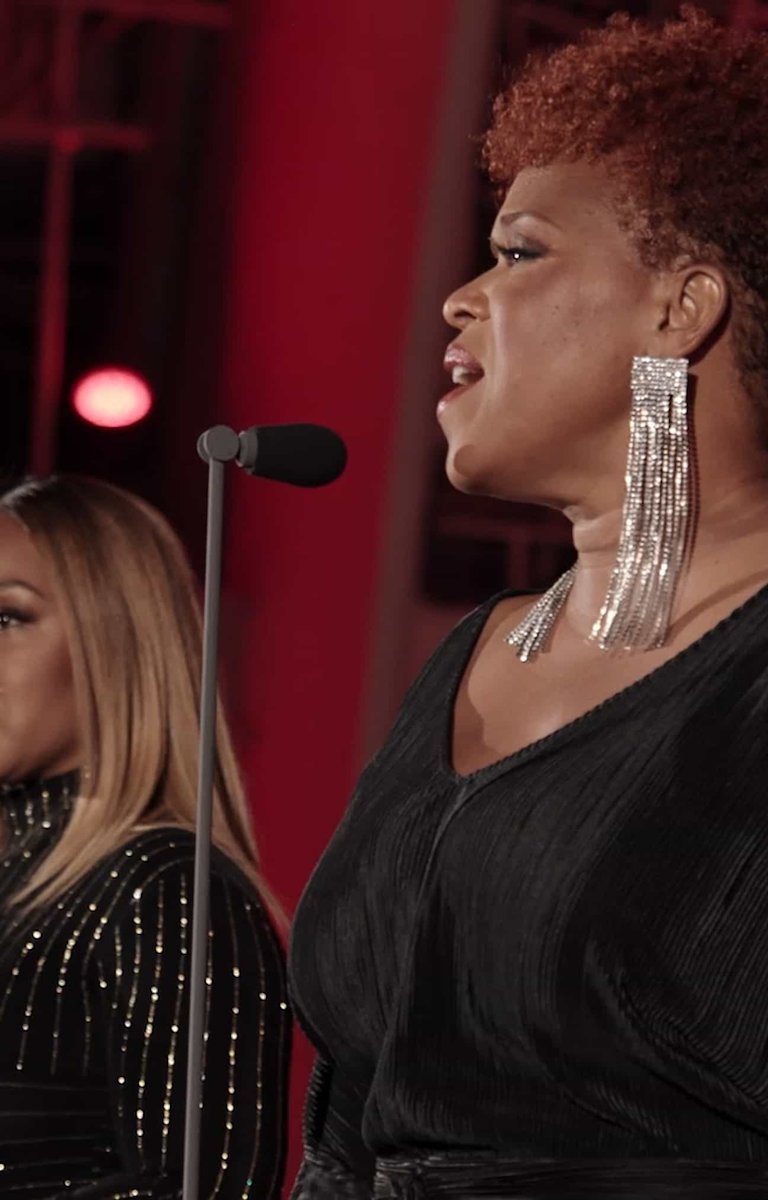
Season 2 - EP3
Easter Sunrise at the Hollywood Bowl
This concert’s streaming date has passed. Enjoy its accompanying essay, interview, special performances and more below.
This episode was released on Apr 4th
About the episode
On March 27, 1921, the Los Angeles Philharmonic performed its first concert, an Easter sunrise service, at the Hollywood Bowl. Now, 100 years later, the orchestra continues to call the venue its summer home. Join Gustavo Dudamel and special guests Mary Mary in celebrating a century of joyous music-making and community.
Gustavo Dudamel
Conductor
Los Angeles Philharmonic
Orchestra
Mary Mary
gospel singers
Nadine Sierra
soprano
Program
“Air pour les trompettes”
Bach’s A-major Suite for harpsichord contained a movement he entitled “Air pour les trompettes,” so it naturally deserved a second life as a fanfare-like piece for brass, which launches our commemoration of the first-ever program at the Hollywood Bowl.
Composed: Circa 1708
Orchestration: horn, 2 trumpets, trombone, tuba
Exsultate, jubilate
This festive solo motet was composed for a favorite singer by the already mature 17-year-old Mozart. Though designed for church—the Latin text speaks of rejoicing—Exsultate, jubilate displays many features of Mozart’s more operatic concert arias; he even infuses elements of a concerto into it, treating the voice as a virtuoso soloist. When you hear it, you marvel at what technique that singer must have had, because Mozart pulls out all the stops, jumping from very high to very low notes and back again, as well as demanding fast, florid passages. Our celebrated vocal virtuoso is Florida native Nadine Sierra, who was the youngest singer ever to win the Marilyn Horne Foundation Vocal Competition.
Composed: 1773
Orchestration: 2 oboes, 2 horns, timpani, organ, solo soprano, strings (5 first violins, 5 second violins, 4 violas, 3 cellos, 2 basses)
“All Hail the Power of Jesus’ Name”
To close our celebration, a piece that was part of that first Easter sunrise service, the traditional hymn “All Hail the Power of Jesus’ Name,” sung for us by the duo Mary Mary. Named for Jesus’ mother and Mary Magdalene, Mary Mary are sisters Erica Atkins-Campbell and Trecina (Tina) Atkins-Campbell, the closest of the nine Atkins children from Inglewood. From the beginning, success followed success as the two contemporary gospel singers went on to be nominated for 11 Grammys—winning four times—and sold more than eight million records worldwide.
Composed: 1779
Orchestration: flute, oboe, 3 clarinets, bassoon, contrabassoon, horn, trumpet, trombone, tuba, harp, 5 percussion, strings (5 first violins, 5 second violins, 4 violas, 3 cello, 2 basses)
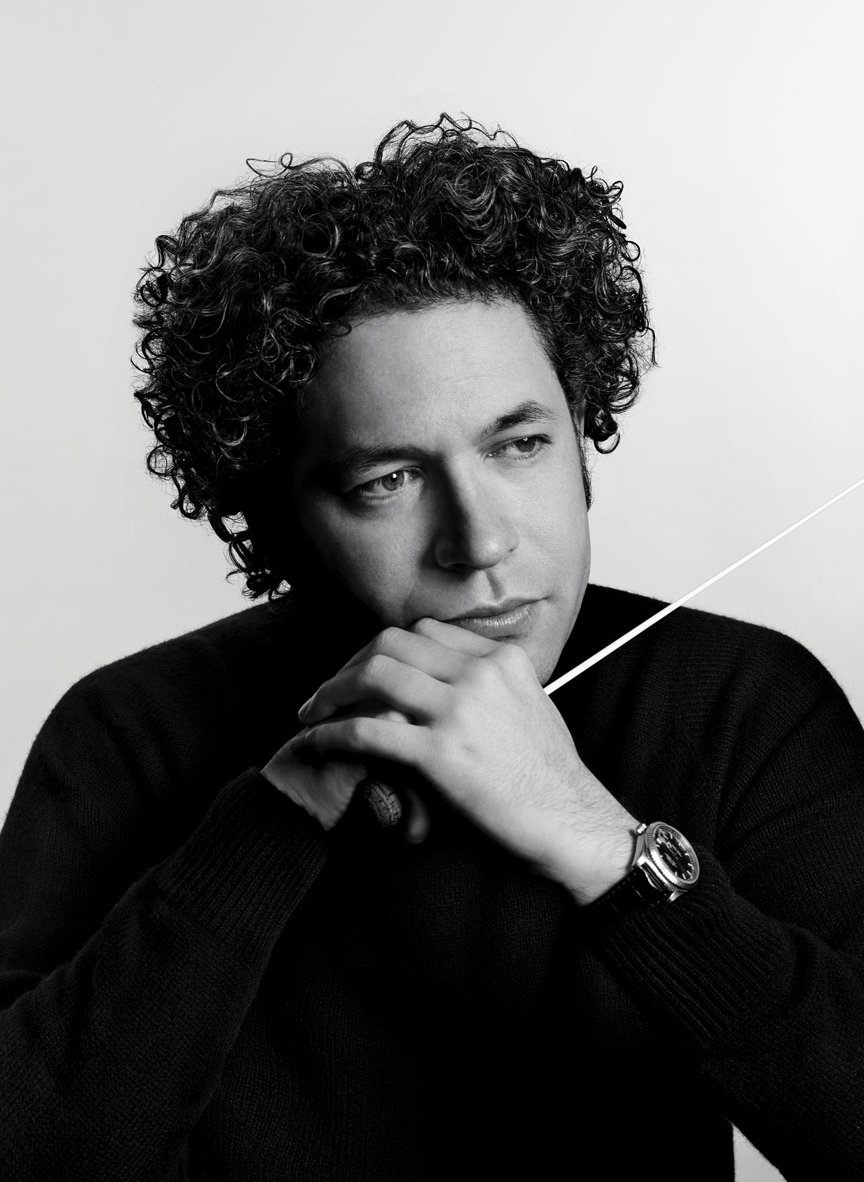
With Gustavo Dudamel
Behind the Music
In this episode, we’re celebrating the LA Phil’s first concert at the Hollywood Bowl, an Easter concert that took place 100 years ago. What is your relationship to the Bowl?
The Bowl is part of my history. It was the first place where I conducted the orchestra, and I feel a deep sense of connection with the place. It is a sacred place for artists, a temple for performers of all types of music. And all of that music becomes one at the Bowl. It is always alive with sound. There’s always a rehearsal or concert happening, and it can be the orchestra playing the Carmina Burana or Peter Gabriel or Brian Wilson. The identity of the place is welcoming to everyone.
It has also been an important place during the pandemic. We are blessed to have this safe environment in which to play and do what we love for others.
You are doing a couple of pieces that are directly tied to the first Easter concert at the Bowl, but Mozart’s Exsultate, Jubilate is the one piece that wasn’t part of the program a century ago. Why did you choose it?
Mozart may not have been played at that first concert, but his work still has a powerful history at the Bowl. When I chose the piece, I was thinking about joy and the desire to bring joy to audiences, especially during these times. That’s what Exsultate, Jubilate is about. It’s music that brings me and, I think, everyone that hears it joy, and we need that. Mozart gives us that.
This was also the first time you worked with the soprano Nadine Sierra.
Yes, it was a privilege to perform with Nadine—such a beautiful voice, such an amazing artist. It was a perfect fit. To play Mozart in an open-air venue at a distance is very difficult, but from the moment we began to play, it was a beautiful interaction between the orchestra and Nadine’s voice. Despite how challenging the piece can be, we had fun recording it.
LISTEN UP
A Playlist from LA Phil Archives
One of the highlights of my work with the LA Phil Archives is uncovering artifacts that tell the orchestra’s story. We recently had the opportunity to digitize all of the Easter Sunrise Service programs in our collections. This playlist includes contemporary versions of songs pulled directly from our 1924-1962 programs, plus a couple of vintage selections. (You can browse the programs here.) As you listen, we invite you to step back in time and picture the orchestra, complete with organ, surrounding a children’s choir arranged as a “living cross” on stage. Women dressed as angels wind their way through a crowd, and the smell of lilies permeates the air. As dawn breaks, hundreds of doves are released into the sky, signaling Easter’s arrival.
Compiled by Meredith Reese, Digital Asset Manager, LA Phil Archives
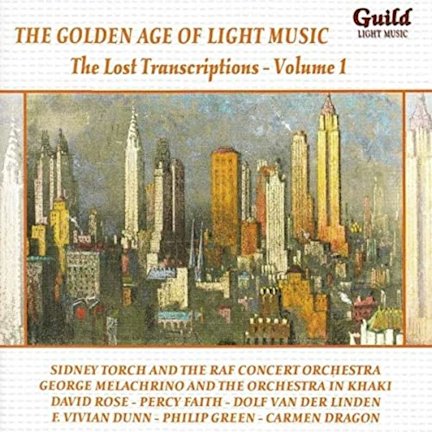
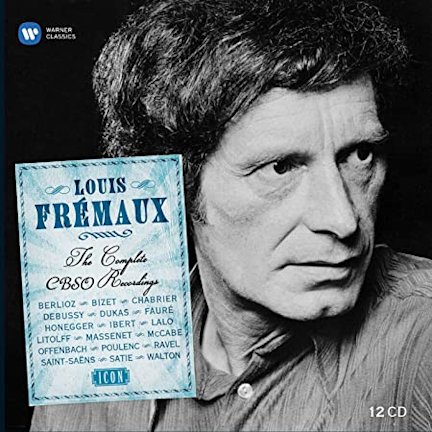
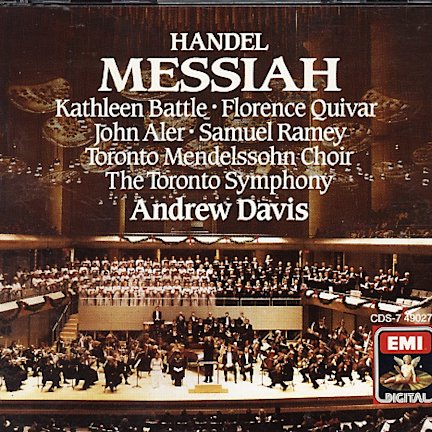

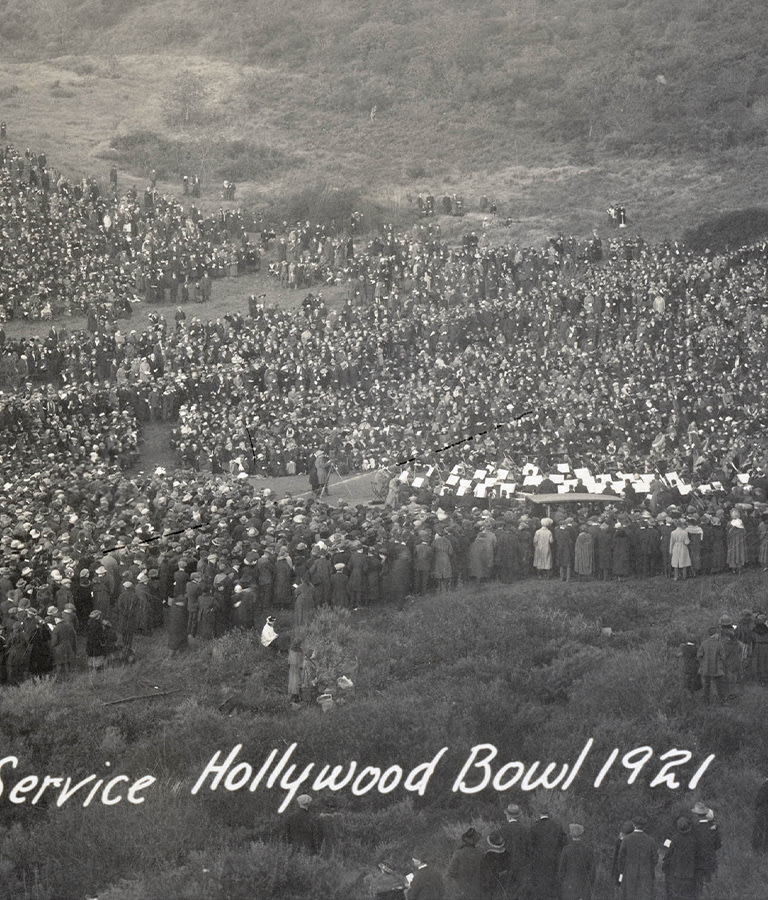
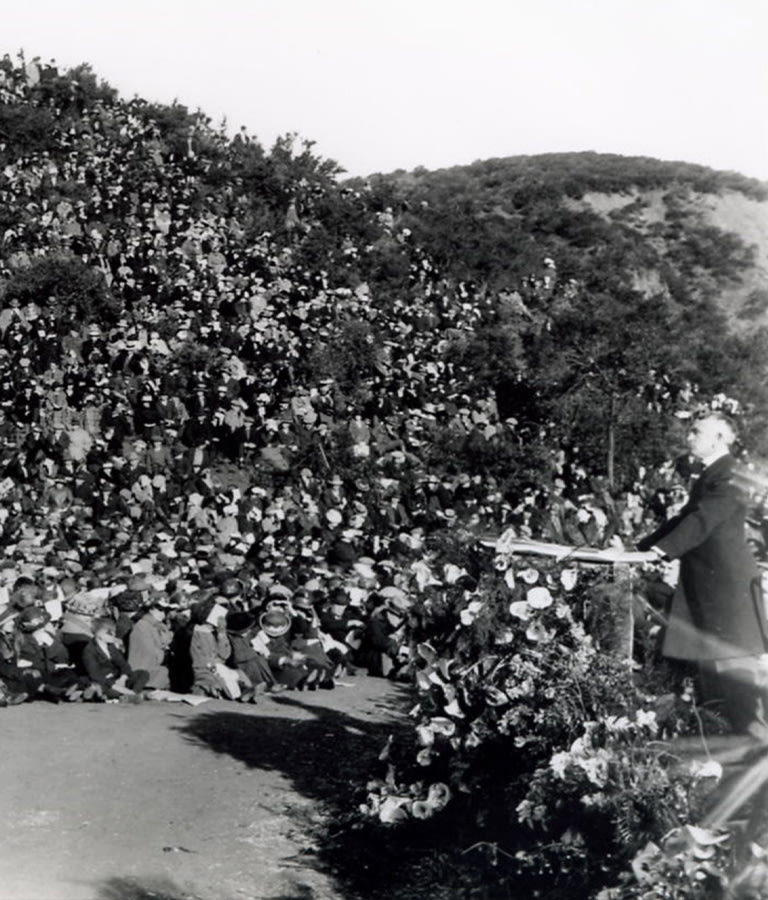
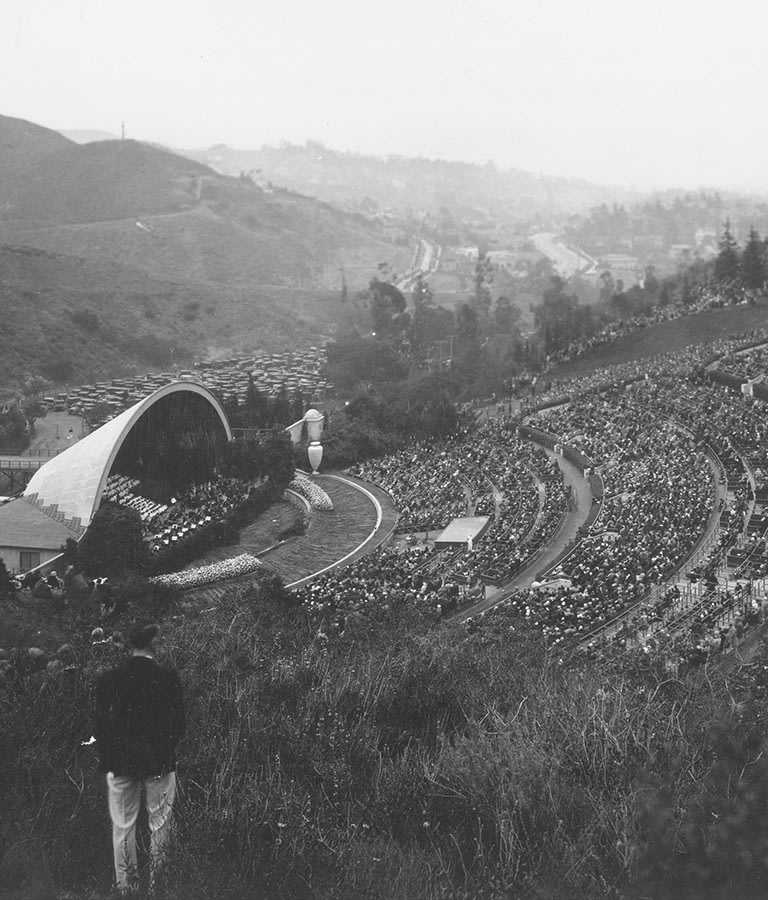
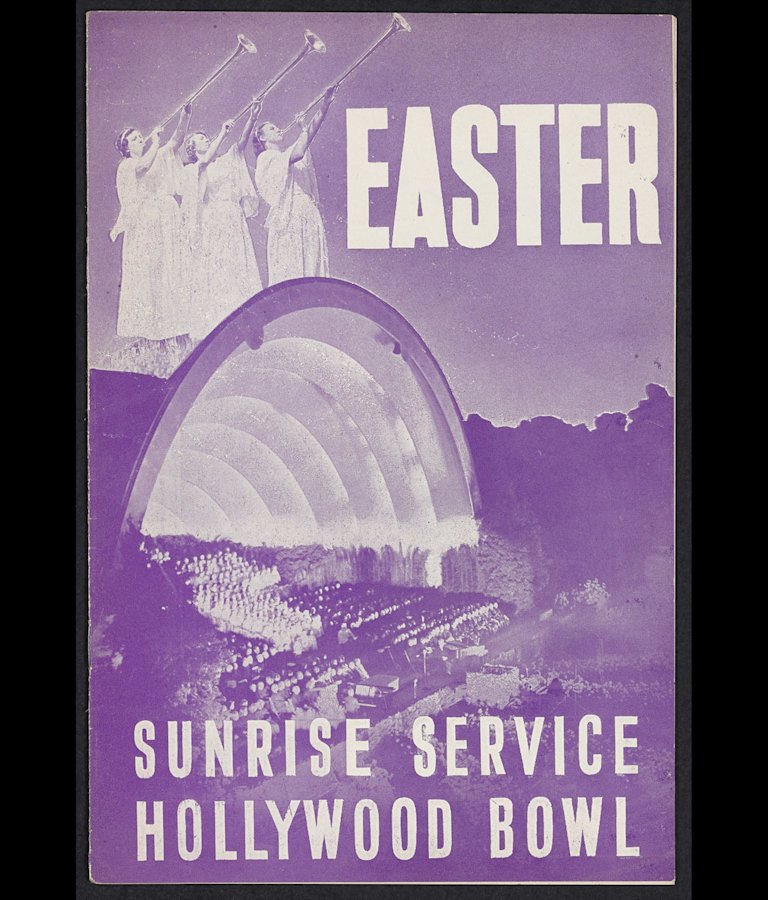
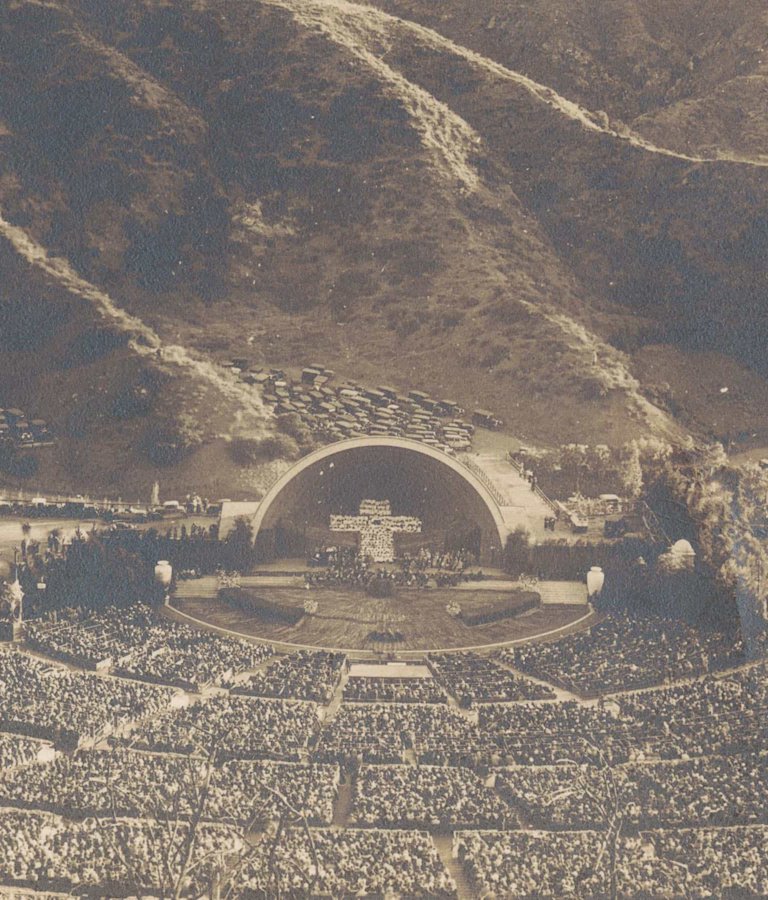
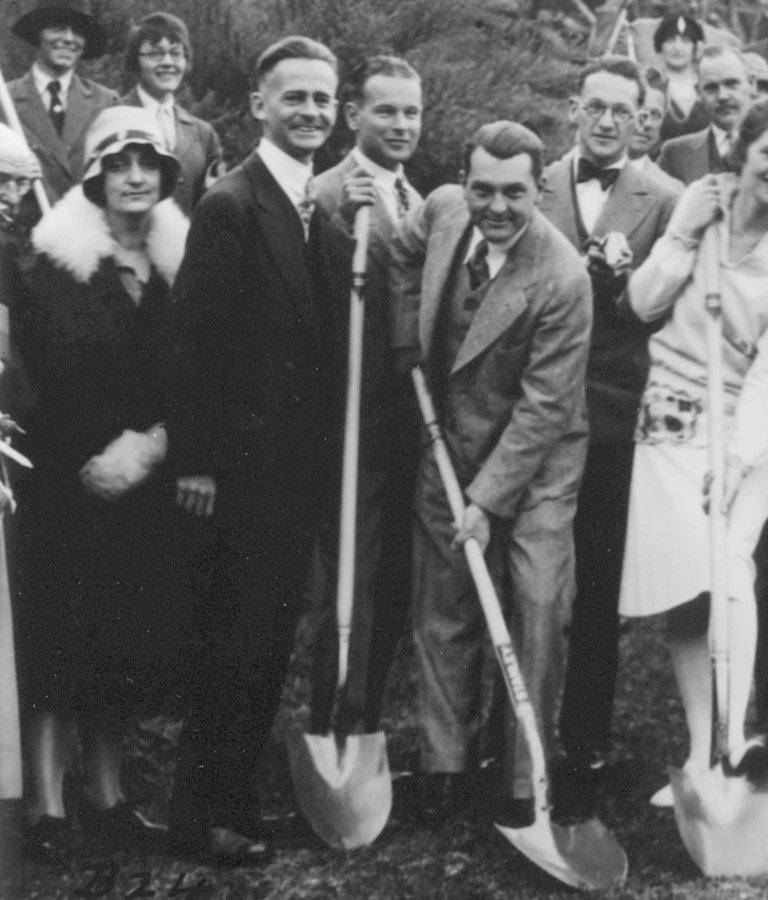
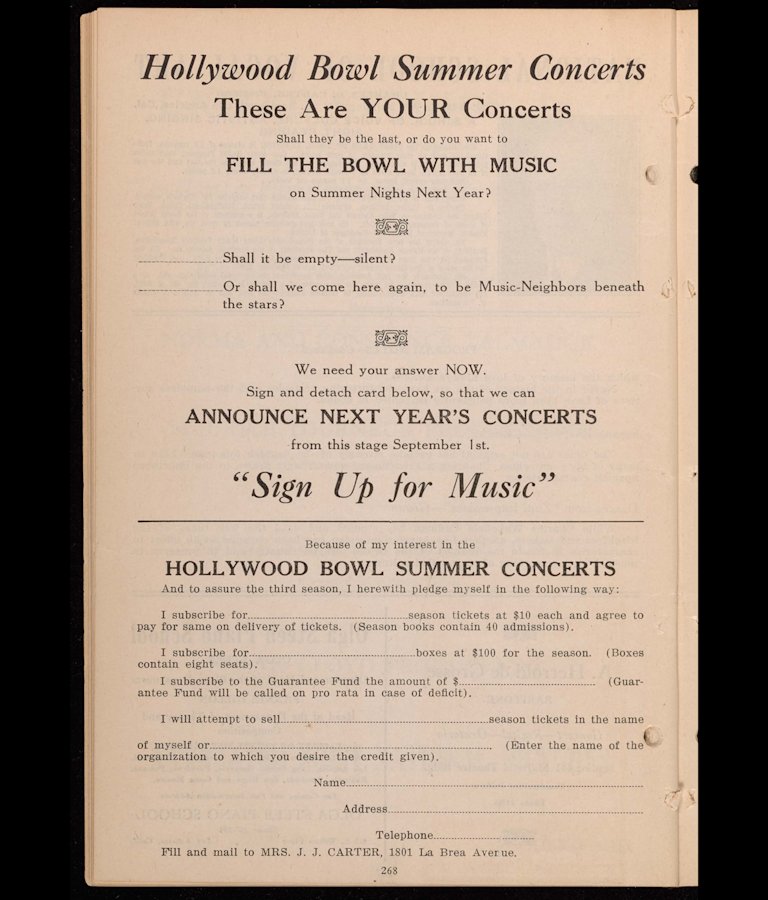
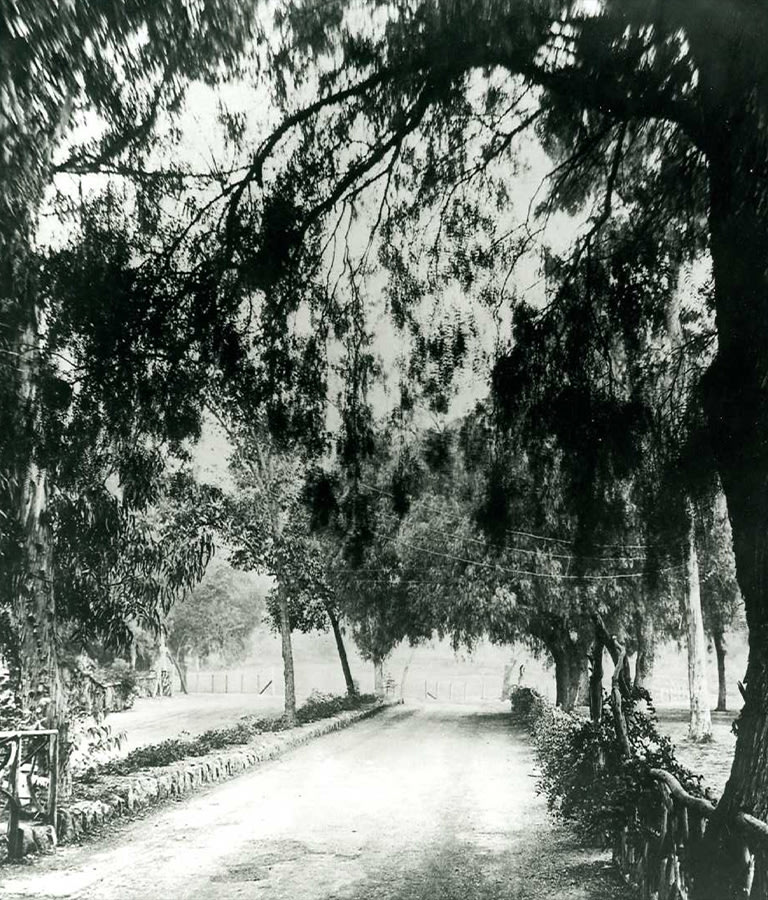
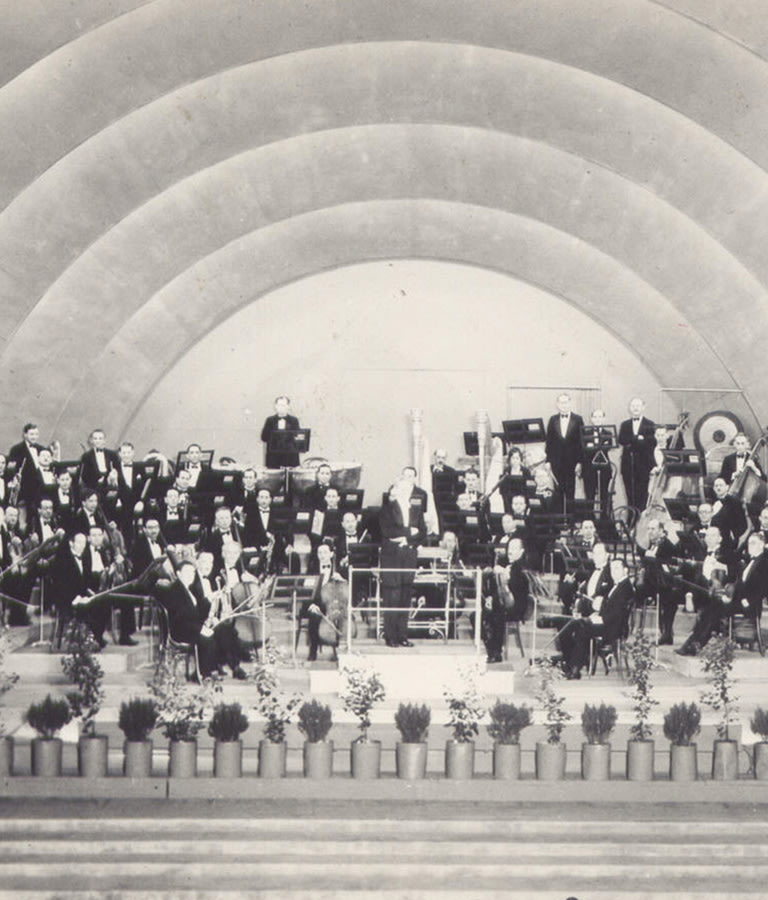
Thousands sat or stood on the grassy hills of the Hollywood Bowl to hear singers, trumpeters, and musicians of the LA Phil perform at the Bowl’s first Easter Sunrise Service in 1921.
A large crowd sits on a grassy hillside at the first Easter Sunrise Service, 1921. From the California Historical Society Collection at the University of Southern California
Panoramic view of the Easter Sunrise Service at the Hollywood Bowl, circa 1930.
Program cover from the 26th annual Easter Sunrise Service at the Hollywood Bowl in 1946.
Every seat is filled for the Easter Sunrise Service in 1928.
Hollywood Bowl founder Artie Mason Carter with her “army” of volunteers, begin work on clearing the Bowl’s grounds, circa 1922.
A page from the Hollywood Bowl’s August 28, 1923 program book asks patrons to “Sign Up for Music” and enable future seasons of Symphonies Under the Stars.
A view of the main entrance to the Bowl, Pepper Tree Lane, in the 1920s. From the California Historical Society Collection at the University of Southern California.
Commemorative postcard depicting the LA Phil on stage at the Bowl in 1929.
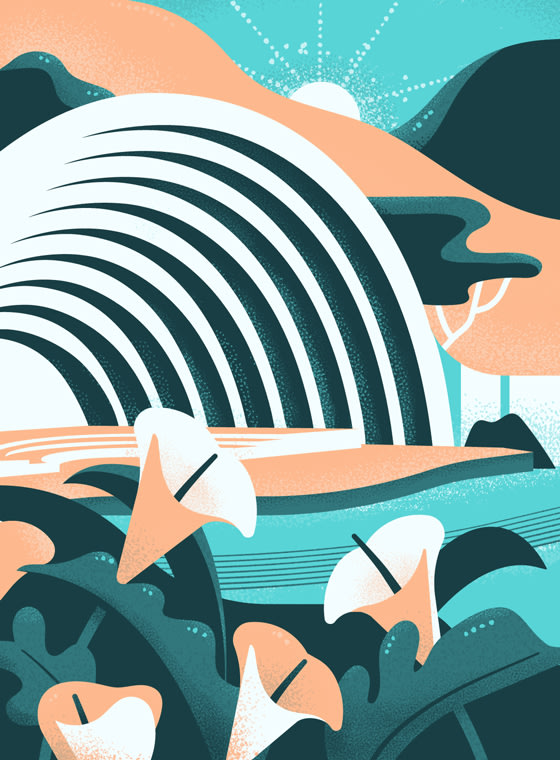
Family Activity
Celebrate the Bowl’s History
Enjoy these activities you can do at home.
Activity 1, Find Your Way to the Hollywood Bowl: Travel through this maze to find your way from Walt Disney Concert Hall to the Hollywood Bowl.
Activity 2, Hollywood Bowl Detective: Decipher a code to discover musicians who have performed at the Hollywood Bowl over its 100-year history.
Activity 3, Take a virtual trip through the Hollywood Bowl: Learn about this iconic venue’s history, its design, and the range of performers and presenters that have graced its stage over the last century. Enjoy this educational resource for students of any age!
Share your creations with your friends, family, and us! With the help of an adult, email a photo of your work to learning@laphil.org or tag us at @laphil on Instagram.
About LA Phil Learning Programs - The LA Phil is committed to learning alongside our community, and to enabling and supporting the next generation of musicians, whether they’re picking up an instrument for the first time or penning their own compositions. Learn more here.
An LA Phil Media Production LA Phil Media is supported by the David C. Bohnett Discovery and Innovation Fund
Gustavo Dudamel Music & Artistic Director
Directed by Alberto Arvelo and Camila Martins FEATURING Mary Mary Nadine Sierra, soprano (appearance courtesy of Deutsche Grammophon) LOS ANGELES PHILHARMONIC LA PHIL STAFF
Support for this episode is provided by Molly Munger and Stephen R. English
SOUND DESIGN Audio Producers: Dmitriy Lipay, Alexander Lipay Recording and Mastering Engineers: Dmitriy Lipay, Alexander Lipay LIGHTING DESIGN Robin Gray Tyler Lambert-Perkins Academy Lighting Consultants
IATSE LOCAL 33 Kevin Brown, Master Carpenter Andy Kassan, Master Electrician Donald Quick, Property Master Michael Sheppard, Master Audio-Visual/Union Steward Kevin Wapner, Assistant Audio-Visual The stage crew is represented by the International Alliance of Theatrical Stage Employees and Moving Picture Machine Operators of the United States and Canada, Local 33
CANNONBALL PRODUCTIONS Directors: Alberto Arvelo & Camila Martins Executive Producer: Andrea Struble Producer: Caroline Olivera Phelan Production Supervisor: Nick Batchelder Commercial Coordinator: Marla Ovledo Director of Photography: Andrew Shankweiler POST-PRODUCTION Editor: Jarrah Gurrie Sound Mix: Yu-Ting Su Color Correction: Nice Shoes Post Maria Carretero Sal Mafitano Producer: Katie Hinsen WEBSITE ToyFight